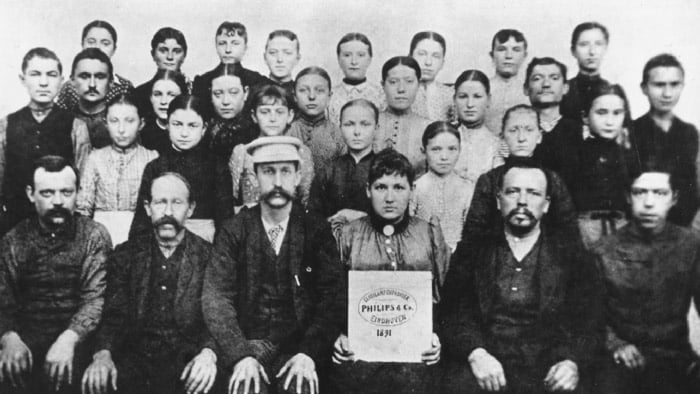When it comes to technological progress and innovation, few companies have left a mark as profound as Philips. With a history stretching back more than a century, Philips has built an impressive legacy in industries ranging from lighting to healthcare. Let’s delve into the company’s evolution from a small Dutch startup to a global health technology leader. Uncover the advanced capabilities of the Philips 5500 LatteGo review
Humble Beginnings: The Founding of Philips
Philips was founded in 1891 by Gerard Philips and his father, Frederik Philips, in Eindhoven, Netherlands. Initially focused on manufacturing carbon-filament lamps, the company’s early years were marked by financial hardships and intense market competition. Despite these struggles, their relentless pursuit of quality became the bedrock for Philips’ rise to prominence in the global electronics landscape. Get a closer look at the features of the Philips 5400 LatteGo review
Pioneering Innovation in the Early Years
By the early 1900s, Philips had established itself as one of Europe's key light bulb manufacturers. This growth was not just a result of large-scale production but also due to an unwavering commitment to innovation. In 1914, Philips set up its Research Laboratory (NatLab), which became a hub for creativity and technological development, enabling the company to explore new avenues for growth. Compare these two machines side by side in the Philips LatteGo 5400 vs 4300 review
Stepping into Radio Technology
In the 1920s and 1930s, Philips expanded into the booming field of radio technology. The company began producing radios in 1927, capitalizing on the surging interest in radio broadcasting. By 1932, Philips had sold over a million radios, demonstrating their capacity to meet consumer demand with precision and insight. Discover the differences among these models in the Philips 3200 vs 4300 vs 5400 review
Overcoming Challenges During World War II
World War II brought significant challenges for Philips, including disrupted operations and damaged facilities. Despite these adversities, the company displayed remarkable resilience. Key personnel were relocated, allowing essential research to continue, and Philips contributed to advancements in radar and other wartime technologies. Their resilience during this period underscores their adaptability and ingenuity. Learn how these two models compare in the Philips 3200 vs 4300 review
Post-War Breakthrough: The Audio Cassette
Following the war, Philips entered a new era of innovation. In 1963, they introduced the compact audio cassette, fundamentally changing the way people recorded and listened to music. This revolutionary product became a global success and further solidified Philips' reputation as a leader in consumer technology. See what sets these models apart in the Philips 3200 vs 5400 review

Revolutionizing Music with the Compact Disc
Collaborating with Sony, Philips launched the compact disc (CD) in the late 1970s, revolutionizing the music industry with a durable and high-quality medium for digital audio. This innovation showcased Philips’ talent for forming strategic alliances and pushing technological limits to redefine the entertainment landscape. Get a detailed review of the Philips LatteGo 5400 review
Diversification in Consumer Electronics
Throughout the latter half of the 20th century, Philips diversified into various consumer electronics. The company played a crucial role in the development of the VHS format and later the DVD, both of which transformed home entertainment. Their introduction of innovations like the Ambilight TV in the 1990s reinforced their position as pioneers in consumer electronics. Discover the compact and efficient design of the Philips 3200 LatteGo review
Shifting Focus to Healthcare Technology
In the 1980s, Philips began shifting its focus towards healthcare technology, seeing enormous potential in the field. They invested heavily in medical imaging, patient monitoring, and health informatics, ultimately establishing themselves as a major player in the health technology industry. Strategic acquisitions and state-of-the-art innovations helped Philips build a comprehensive portfolio aimed at improving healthcare outcomes. Dive into the advanced features of the Philips 4300 LatteGo review
A Strategic Pivot: Health and Lighting Solutions
In recent years, Philips has strategically pivoted from traditional consumer electronics to focus on health technology and lighting. In 2016, Philips spun off its lighting division, rebranding it as Signify, to concentrate more intensively on health technology solutions. This shift mirrors the global trend towards prioritizing health and wellness.
Commitment to Sustainability and Responsibility
Philips has consistently upheld its commitment to sustainability and social responsibility. The company has set ambitious objectives, such as achieving carbon-neutral operations and adopting circular economy practices, highlighting their dedication to environmentally sustainable practices and enhancing societal well-being.
Leading the Digital Health Revolution
Fully embracing the digital age, Philips has leveraged artificial intelligence (AI) and data analytics to improve its products and services. By focusing on connected care and smart health solutions, Philips continues to establish itself as an innovative leader, ready for a future where technology is central to healthcare delivery and patient outcomes.

Conclusion: A Legacy of Adaptation and Innovation
The journey of Philips is an inspiring testament to the power of innovation and adaptability. From its origins in light bulb manufacturing to its current status as a leader in health technology, Philips has continually evolved to meet the changing needs of society. Their influence spans multiple industries, from transforming music experiences to pioneering advancements in healthcare.
As Philips continues to address global challenges and drive technological progress, their enduring legacy serves as a powerful example of how dedication to innovation and societal advancement can leave a lasting impact. The future for Philips appears just as bright as the storied history that has led them here.
